Tameshigiri 試し斬り is the testing of swords and swordsmen
against a target. Tameshigiri was once practiced on
condemned criminals, but today the targets are
tatami omote
(straw like floor covering). Please do not try tameshigiri without proper instruction and
supervision. We require six months of classes before students
begin this type of training. Stainless steel replica swords are
not used since they can easily break and cause serious injury.
We use shinken cutting swords designed for real use. Tameshigiri is performed on new tatami soaked
overnight. The price list and availability of these swords
can be found on our shinken page and
the targets on our tatami page.
If you can not see the video you may need to load the "ffdshow
MPEG-4 Video Decoder" codec for your media player. We
suggest going to get the Combined Community Codec at
http://www.cccp-project.net/ .
|
|
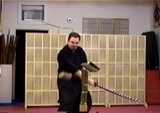 |
Inazuma Giri - Lightning cut - A kesa
(downward diagonal), gyaku kesa (upward diagonal), and
kesa (downward diagonal) are performed in under a
second. See
Video |
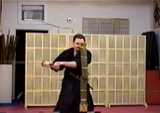 |
Mizu Gaeshi - Returning wave cut - A
gyaku kesa (upward diagonal) cut is done on the bottom
of the target and the severed piece is cut in two with a
suihei (horizontal) cut before it falls.
See Video |
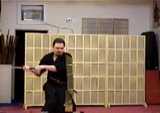 |
Kawasemi - Kingfisher cut - A kesa
(downward diagonal) cut is performed on the top of the
target. A gyaku kesa (upward diagonal) cut is done on
the bottom of the target and the severed piece is cut in
two with a suihei (horizontal) cut before it falls.
See
Video
See Slow
Motion Video |
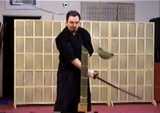 |
Rokudan Giri - This six cut sequence is
from the fifth ZNBDR shoden seitei kata.
See Video |
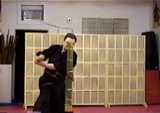 |
Mizu Garuma - A gyaku kesa (upward
diagonal) cut is done on the bottom of the target and
the severed piece is cut in two with a gyaku kesa
(upward diagonal) cut from the opposite side before it
falls.
See Video |
 |
Nami Gaeshi - Wave cut - A kesa
(downward diagonal) cut is performed on the first
target. A gyaku kesa (upward diagonal) cut is done on
the second target followed by a suihei (horizontal) cut
on both targets.
See
Video |
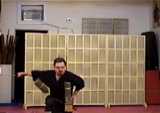 |
Batto Giri - Draw and cut - The katana
is drawn from the saya and cuts in a single motion.
Gyaku kesa (upward diagonal), kesa (downward diagonal),
and suihei (horizontal) cuts are performed in this
sequence.
See
Video |
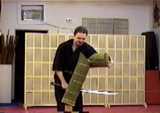 |
Futo Giri - Wide cut - A kesa (downward
diagonal) cut is performed on a large 5 tatami target.
See
Video |
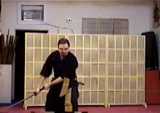 |
Nuki Uchi - These two cuts are from the
second Toyama Ryu kata. A batto suihei (horizontal draw
and cut) is followed by a kesa (downward diagonal) cut.
See
Video |
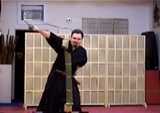 |
Syo Hatto - These two cuts are from the
first Toyama Ryu kata. A batto gyaku kesa (upward
diagonal draw and cut) is followed by a kesa (downward
diagonal) cut.
See
Video |
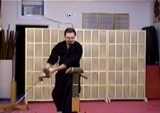 |
Tonbo - Dragonfly cut - Two kesa
(downward diagonal) cuts are performed from hasso on a
freestanding horizontal target.
See
Video |
 |
Tsubame - Swallow cut - A kesa
(downward diagonal) cut is followed immediately with a
gyaku kesa (upward diagonal) cut. The two cuts are
performed from both sides of the target.
See
Video |
|
|
 |
Inazuma Giri - Lightning cut - A kesa
(downward diagonal), gyaku kesa (upward diagonal), and
kesa (downward diagonal) are performed in under a
second.
See
Video |
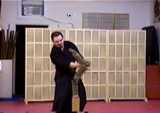 |
Kawasemi - Kingfisher cut - A kesa
(downward diagonal) cut is performed on the top of the
target. A gyaku kesa (upward diagonal) cut is done on
the bottom of the target and the severed piece is cut in
two with a suihei (horizontal) cut before it falls.
See
Video |
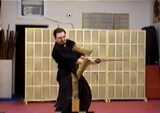 |
Mizu Gaeshi - Returning wave cut - A
gyaku kesa (upward diagonal) cut is done on the bottom
of the target and the severed piece is cut in two with a
suihei (horizontal) cut before it falls.
See Video |
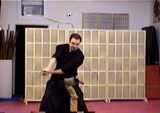 |
Rokudan Giri - This six cut sequence is
from the fifth ZNBDR shoden seitei kata.
See Video |
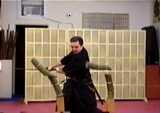 |
Nami Gaeshi - Wave cut - A kesa
(downward diagonal) cut is performed on the first
target. A gyaku kesa (upward diagonal) cut is done on
the second target followed by a suihei (horizontal) cut
on both targets.
See
Video |
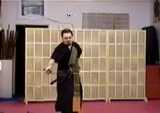 |
Batto Giri - Draw and cut - The katana
is drawn from the saya and cuts in a single motion.
Gyaku kesa (upward diagonal), kesa (downward diagonal),
and suihei (horizontal) cuts are performed in this
sequence.
See
Video |
 |
Futo Giri - Wide cut - A kesa (downward
diagonal) cut is performed on a large 5 tatami target.
See
Video |
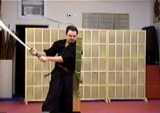 |
Mizu Garuma - A gyaku kesa (upward
diagonal) cut is done on the bottom of the target and
the severed piece is cut in two with a gyaku kesa
(upward diagonal) cut from the opposite side before it
falls.
See Video |
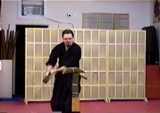 |
Tonbo - Dragonfly cut - Two kesa
(downward diagonal) cuts are performed from hasso on a
freestanding horizontal target.
See
Video |
L6 Katana
|
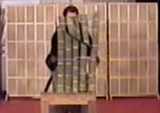 |
Yokonarabi - A kesa (downward diagonal)
cut is performed on 5 tatami targets.
See Video
With Slow
Motion |
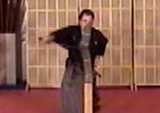 |
Batto Giri - Draw and cut - The katana
is drawn from the saya and cuts in a single motion.
Gyaku kesa (upward diagonal), kesa (downward diagonal),
and suihei (horizontal) cuts are performed in this
sequence.
See Video
See Slow
Motion Video |
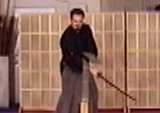 |
Rokudan Giri - This six cut sequence is
from the fifth ZNBDR shoden seitei kata.
See
Video |
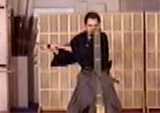 |
Mizu Gaeshi - Returning wave cut - A
gyaku kesa (upward diagonal) cut is done on the bottom
of the target and the severed piece is cut in two with a
suihei (horizontal) cut before it falls.
See
Video |
 |
Tonbo - Dragonfly cut - Two kesa
(downward diagonal) cuts are performed from hasso on a
freestanding horizontal target.
See Video
|